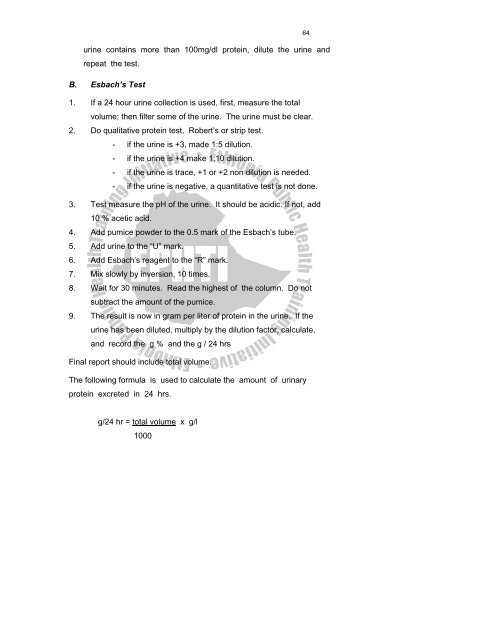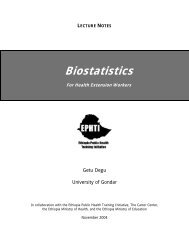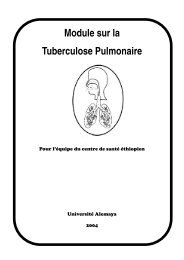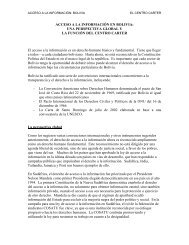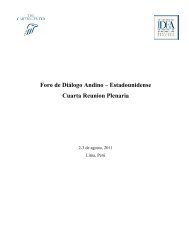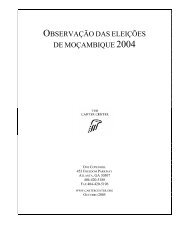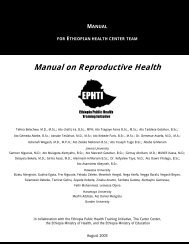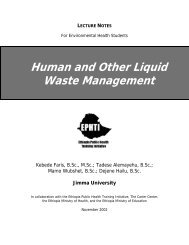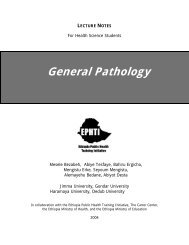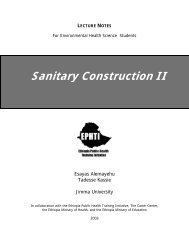Urinalysis - The Carter Center
Urinalysis - The Carter Center
Urinalysis - The Carter Center
You also want an ePaper? Increase the reach of your titles
YUMPU automatically turns print PDFs into web optimized ePapers that Google loves.
urine contains more than 100mg/dl protein, dilute the urine and<br />
repeat the test.<br />
B. Esbach’s Test<br />
1. If a 24 hour urine collection is used, first, measure the total<br />
volume; then filter some of the urine. <strong>The</strong> urine must be clear.<br />
2. Do qualitative protein test, Robert’s or strip test.<br />
- if the urine is +3, made 1:5 dilution.<br />
- if the urine is +4 make 1:10 dilution.<br />
- if the urine is trace, +1 or +2 non dilution is needed.<br />
- if the urine is negative, a quantitative test is not done.<br />
3. Test measure the pH of the urine. It should be acidic. If not, add<br />
10 % acetic acid.<br />
4. Add pumice powder to the 0.5 mark of the Esbach’s tube.<br />
5. Add urine to the “U” mark.<br />
6. Add Esbach’s reagent to the “R” mark.<br />
7. Mix slowly by inversion, 10 times.<br />
8. Wait for 30 minutes. Read the highest of the column. Do not<br />
subtract the amount of the pumice.<br />
9. <strong>The</strong> result is now in gram per liter of protein in the urine. If the<br />
urine has been diluted, multiply by the dilution factor, calculate,<br />
and record the g % and the g / 24 hrs<br />
Final report should include total volume.<br />
<strong>The</strong> following formula is used to calculate the amount of urinary<br />
protein excreted in 24 hrs.<br />
64<br />
g/24 hr = total volume x g/l<br />
1000


